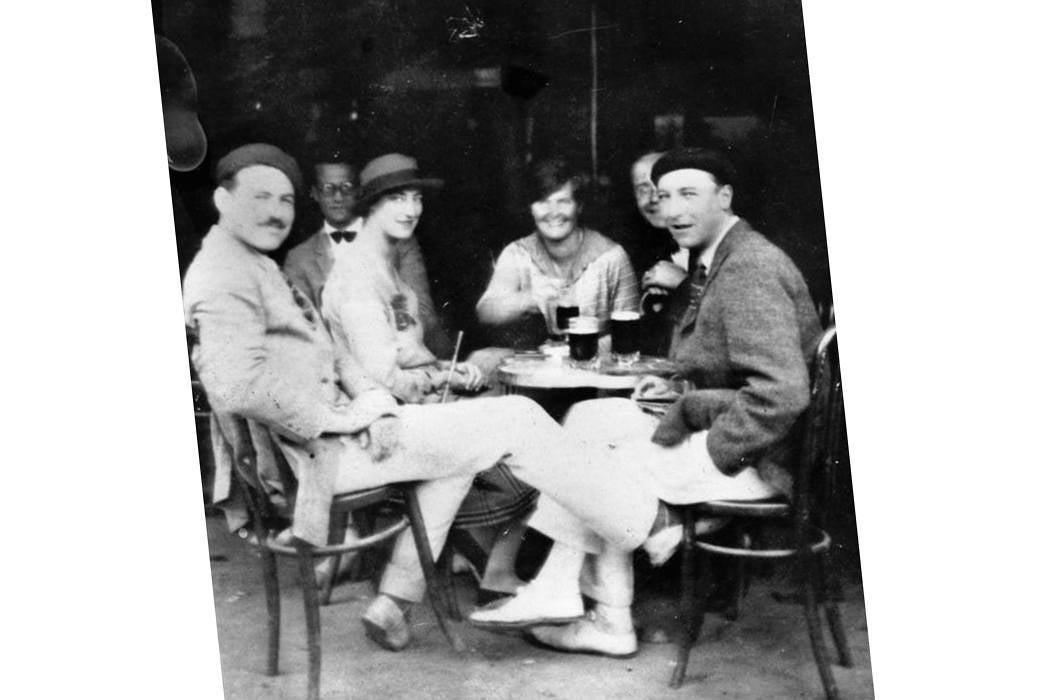There’s a new book out called Everybody Behaves Badly: The True Story Behind Hemingway’s Masterpiece The Sun Also Rises; in this exhaustively researched tome, Lesley M.M. Blume tracks Hemingway’s original group of friends on their pilgrimage to the Pamplona bull fights in the summer of 1925 through letters, interviews, and archives. Her research reveals that the novel’s tale of the “Bacchanalian morass of sexual jealousy and gory spectacle” was “nothing but a report on what happened.” In other words, Ernest Hemingway’s famous, career-launching debut novel was essentially gossipy reportage.
And yet, subtle authorial movements (readers who know Hemingway’s book will remember how pared-down the language is, how little reflection or interpretation of events the narrator offers) shift the novel into its position as a masterpiece of “The Lost Generation.” As the critic W. J. Stuckey wrote back in the 70’s:
It is widely held that The Sun Also Rises is a prose version of The Waste Land; its theme, the sterility of life in the modern world. Jake Barnes, Hemingway’s version of Eliot’s protagonist, is a representative victim of this world, and his famous wound, received in the Great War, is a symbol of the general impotence of the times.
(One of Blume’s book’s takeaways: unlike his fictional hero, Hemingway’s war wound did not affect his virility, thank you very much.)
But were Hemingway and his real-life buddies actually feeling as desolate and empty as all that? Stuckey points out the “obvious pleasure Hemingway’s characters take in being ‘good and lost,'” and their “mindless pursuit in sensation.” Hemingway’s fictional alter-ego Jake is detached, amoral, and dispassionate. Of course, we must remember he’s just been through an “atrocious war,” and has the lifelong scar of his impotence to show for it, so his inability to love isn’t entirely his fault. As Stuckey puts it, “‘It’s a hell of a world,’ we are meant to feel, and all there is left is to eat, drink and enjoy oneself.” Hemingway was not creating a barren, emotional wasteland in order to prove a point about modern life; he was simply writing about “the world as he knew it.”
Weekly Newsletter
Blume’s exploration of the real-life story behind the book shores this up. According to Blume, Hemingway’s fiesta compatriots were unnerved by how realistically and unsympathetically they’d been portrayed in his book: “The portraits would haunt [them] for the rest of their lives, but for Hemingway, his one-time friends were simply collateral damage. After all, he was revolutionizing literature, and in every revolution, some heads must roll.” He was, it seems, utilizing his training as journalist and reporting just the facts, ma’am. In Stuckey’s words:
The Sun Also Rises is not about the sterility of modern life or the decline of love in the modern world; it is about a group of characters who go off to a fiesta, who thoroughly enjoy themselves…and then have their pleasure spoiled by the inevitable change that always takes place in human affairs. Love does not last, fiestas do not last, generations do not last…Only the earth abides and the endless cycle of daily change.
Editor’s Note: This article was updated to italicize the name of the novel under discussion.







